US Robotics Pilot 5000 - the first successful PDA. Internals, modem, use with modern OS
 Long ago, in 1996, the palm trees were called pilots, and they were released by US Robotics (as well as modems). I managed to get their earliest PDA - US Robotics Pilot 5000 - with memory pumped up to 1MB: yes, yes, while PDAs supported an upgrade (hello Google Project Ara) - you could get the IR port and more memory, or, for example, the receiving module paging messages).
Long ago, in 1996, the palm trees were called pilots, and they were released by US Robotics (as well as modems). I managed to get their earliest PDA - US Robotics Pilot 5000 - with memory pumped up to 1MB: yes, yes, while PDAs supported an upgrade (hello Google Project Ara) - you could get the IR port and more memory, or, for example, the receiving module paging messages).Processor - Motorola Dragonball, clocked at 16 MHz. However, this was more than enough for any application: in PalmOS 1.0, properly written applications were “always running” - and switching between them was almost instantaneous. Monochrome screen with a resolution of 160x160 pixels and without backlight - ate a minimum of energy.
Appearance and insides
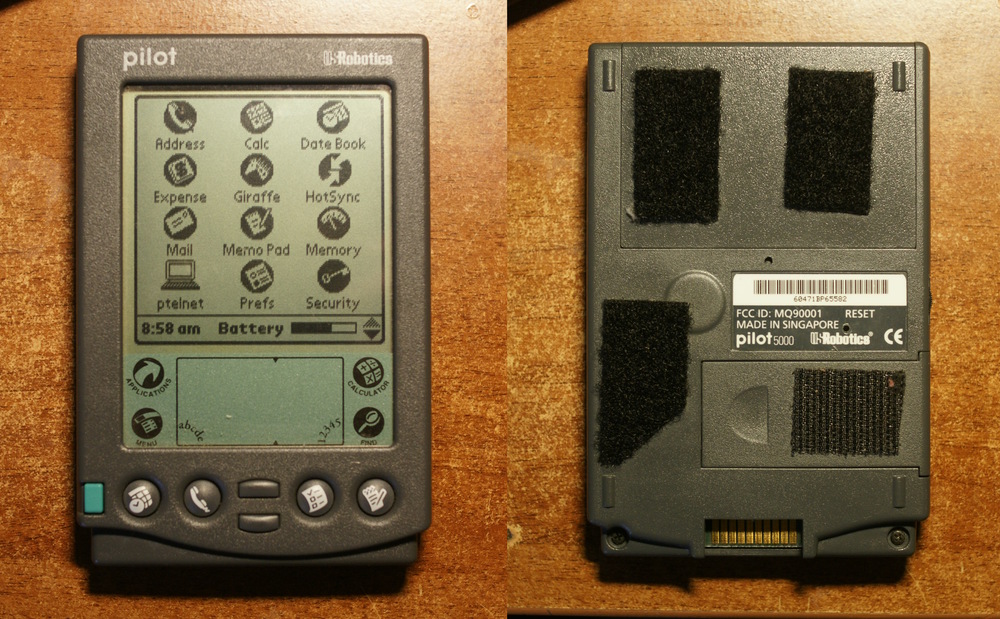
')
On the back side of the protective cover - expansion module:
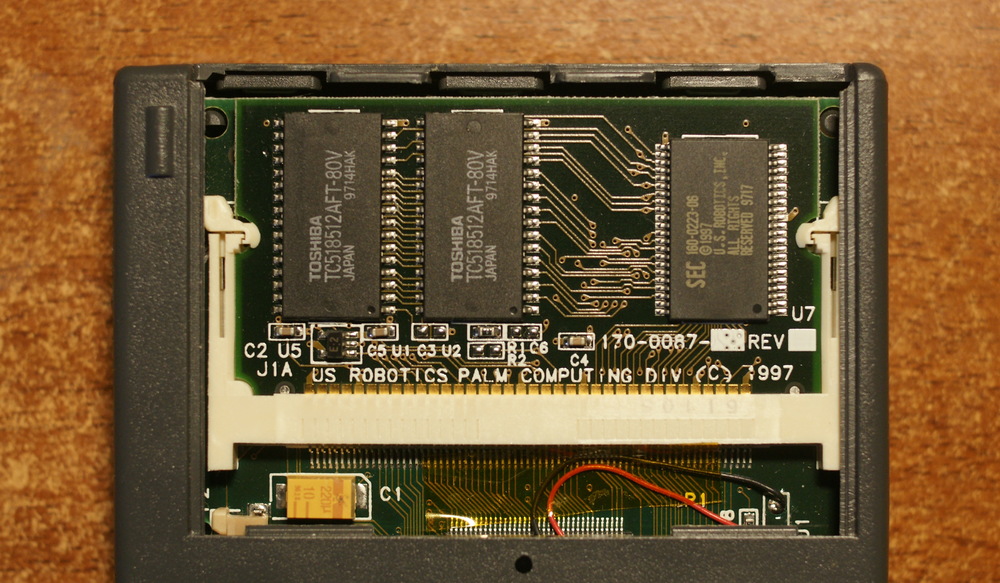
The board of the central processor, in the lower right corner - a chip of the RS232 level converter:

The reverse side of the processor board and the display board. Directly on flexible printed circuit boards LCD driver crystals.
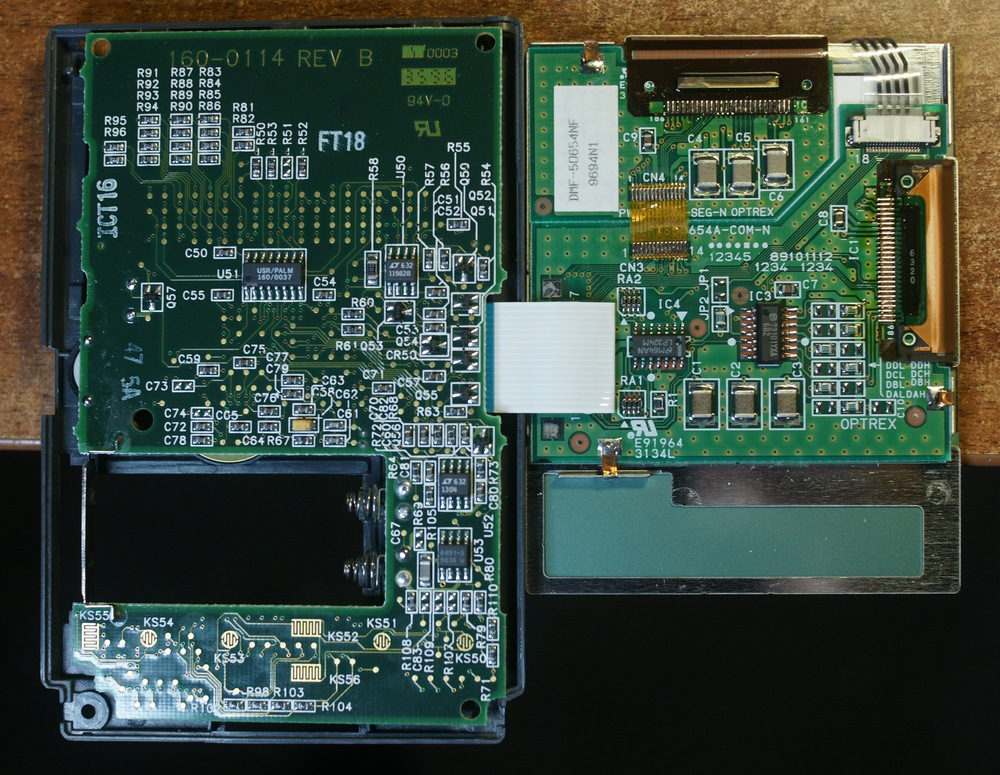
Power and handwriting
According to the measurement results, in a dream the palm consumes 0.168mA, with the screen turned on - 17.4mA, with a maximum load - 43mA. Accordingly, with a set of batteries for 1200 mA, the “standby” time is 297 days, the time of active work (~ reading books) is 29 hours. Naturally, such a low consumption is possible due to the lack of illumination and a processor with a small frequency, the absence of any multimedia functions. However, their main tasks were performed perfectly.Handwriting seems never to be forgotten. 6 years have passed, as I did not write to Graffiti - but everyone remembers hands. I typed the text in 36 seconds, on the on-screen keyboard in 33 seconds. But I think after a little practice, graffiti would be faster.
Modem
It would be strange if the modem manufacturer did not attach a modem to its device :-) Such a modem could be found - in store packaging. He has been waiting for us for 18 years.

However, a trick was waiting for me - the batteries over the years have managed to flow. Fortunately, the modem lay so that the electrolyte did not touch the electronics - and after washing and replacing the batteries it worked.
A dial-up provider, who could have been called for a test in Moscow from the first 5 attempts, could not be found, had to call as much as Yekaterinburg. On video connection at 3:40.
The interior of the modem:

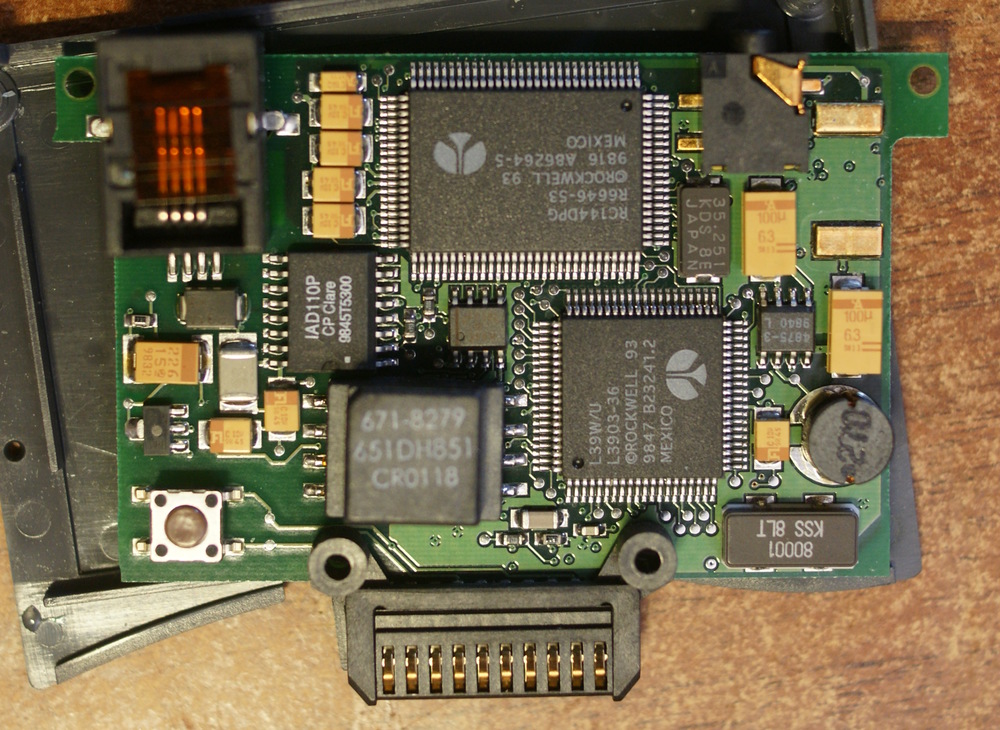
We connect palm as Linux terminal
What could be useful for it now? As we remember, Palma has a full-fledged RS232 port on the connector, which means you can try using it as a terminal. After several attempts, I managed to find a terminal that works under PalmOS 1.0 - ptelnet. Fortunately, the Pilot Install utility for installing programs on Palms Install has worked without problems with the Pilot 5000 under Windows 8.1 using the hardware COM port on the LGA2011 motherboard (yes, there are still those - you only need to buy a bar with a connector ). I honestly prepared for a lot of problems.
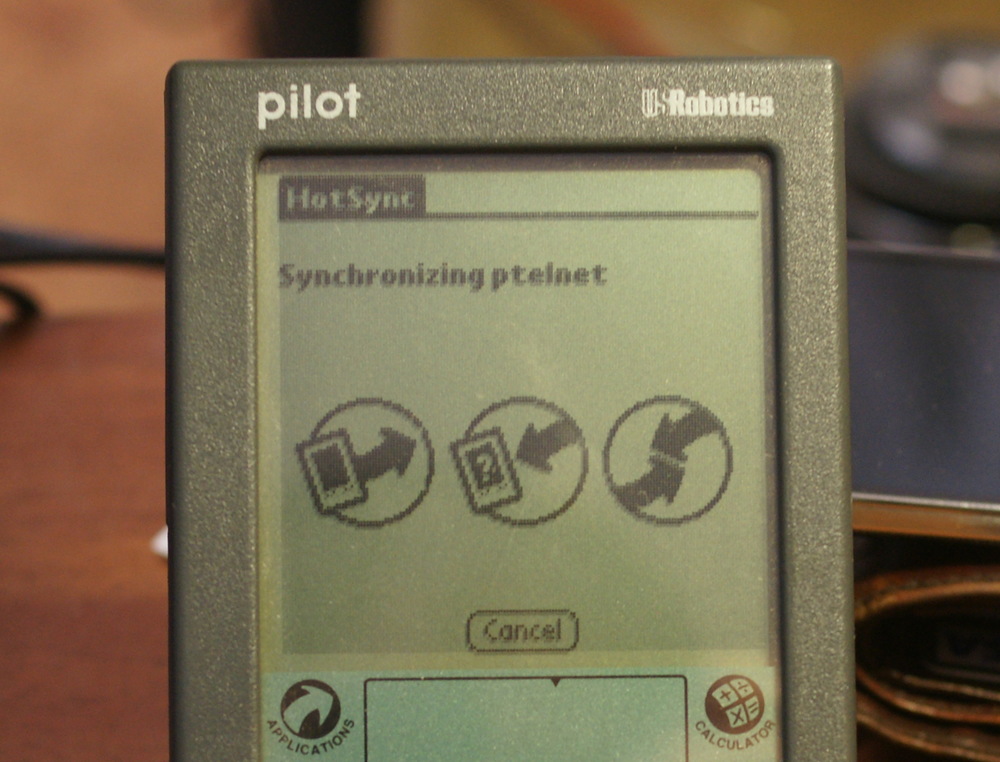
After installation - you can immediately say hello from the palm in Putty:

Next, turn on the RS232 terminal in Linux - and you can frighten everyone with photos of top on the palm. The maximum supported port speed is 115200.
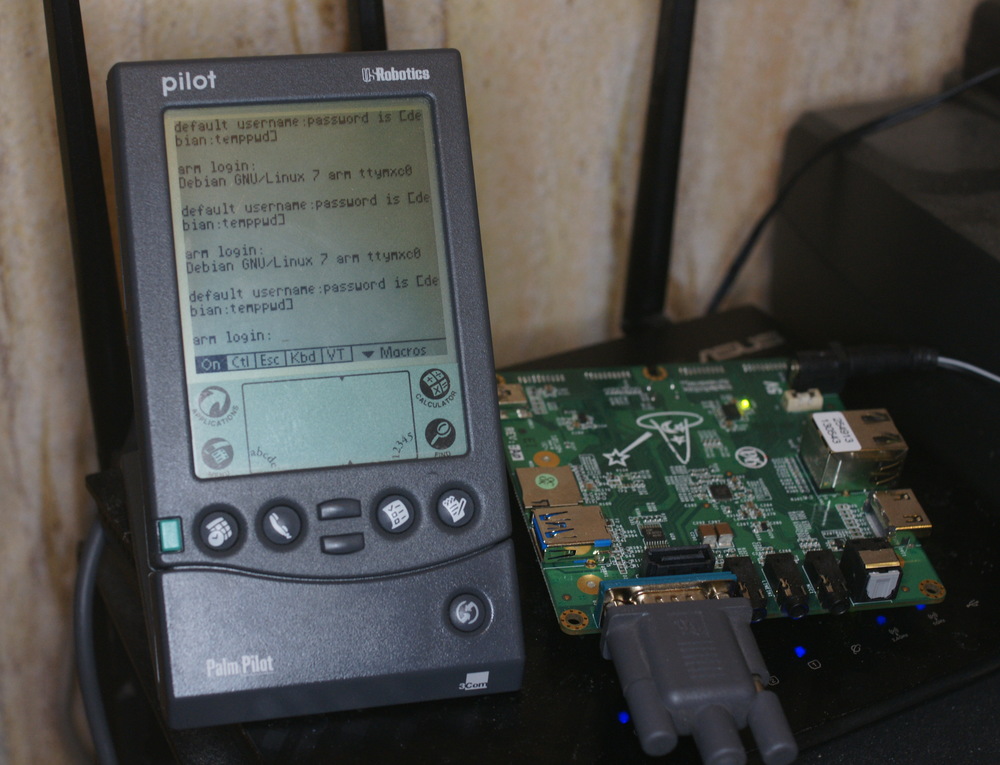
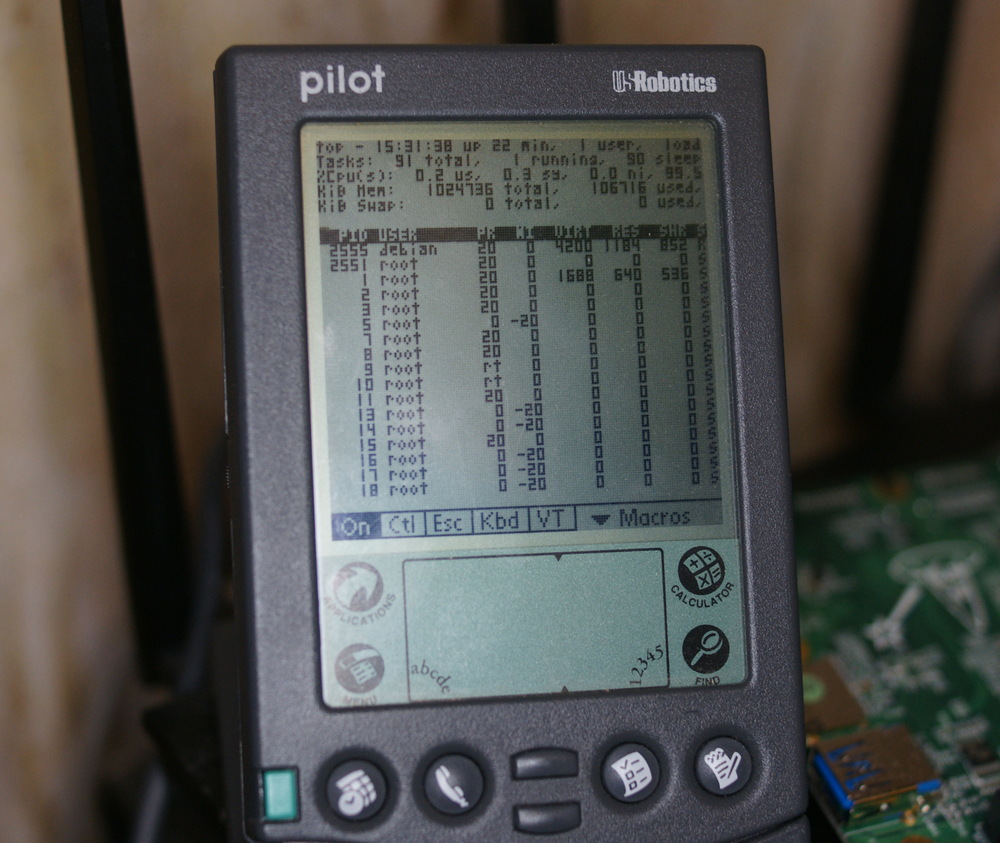
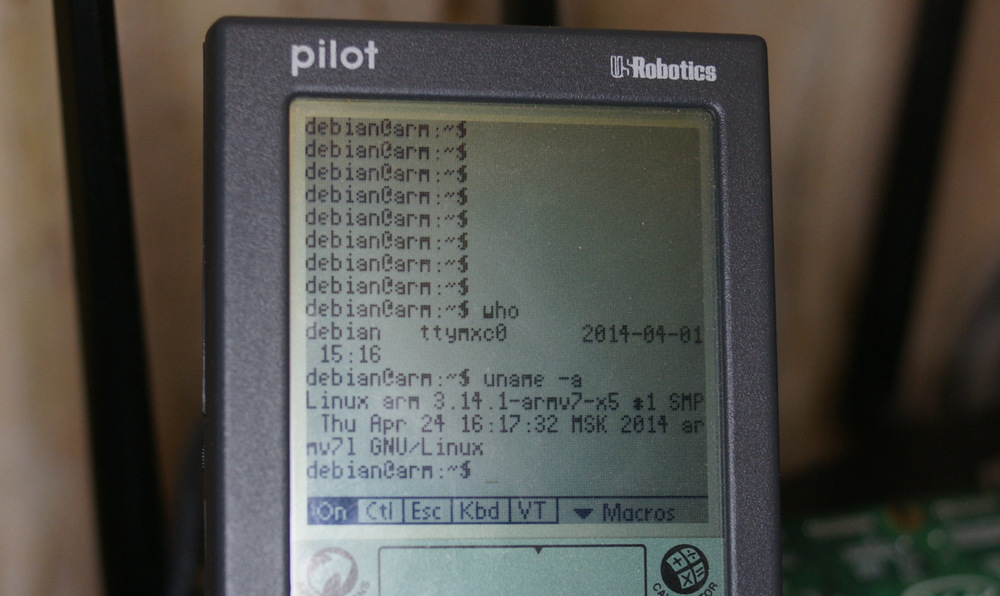
Well, with the terminal on, the space of fantasy is unlimited - you want a clock in pseudographics, you want - server monitoring and mail notification.
I hope this history excursion was interesting, and reminded of the good old times, when 29 hours of battery life did not surprise anyone.
Source: https://habr.com/ru/post/221983/
All Articles